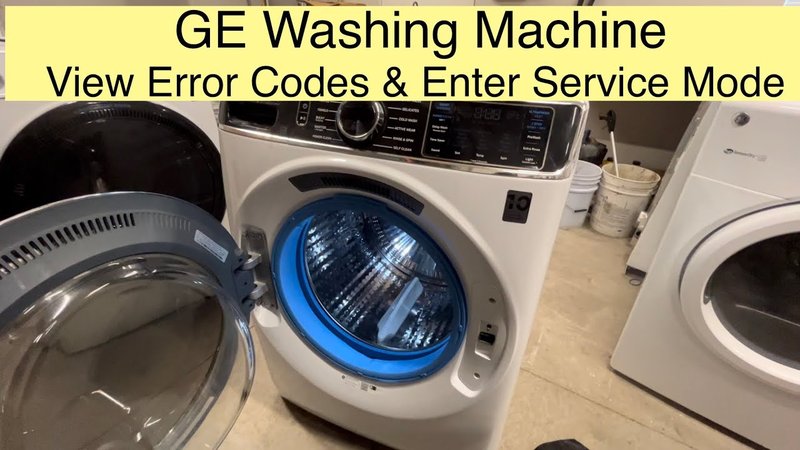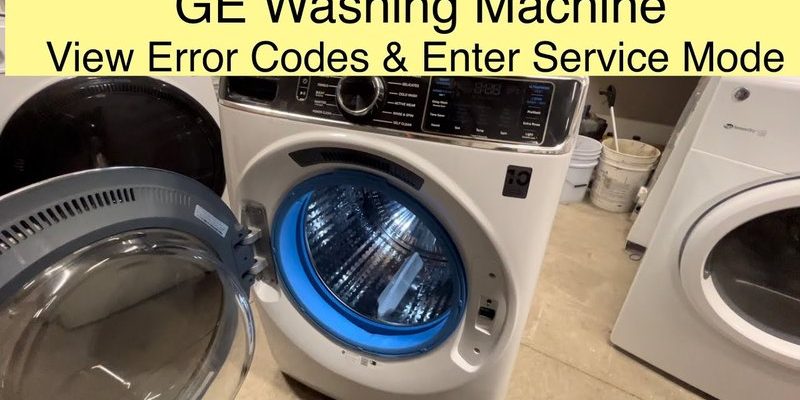
Here’s the deal: This error code signals a draining issue with your washing machine. Think of your washer as a concert where all the performers need to leave the stage (i.e., the drum) efficiently to make room for the next act. If something clogs the exit, nobody can leave, and chaos ensues. This code usually indicates that the water can’t be emptied from the drum properly due to a blockage or malfunction. Let’s dive into what you can do to prevent this from becoming a recurring nightmare.
Understanding the Causes of Error Code OE
You might be wondering, what exactly causes the Error Code OE to appear? Well, let’s break it down into simple terms. The primary issue stems from the washing machine’s inability to drain water efficiently. Imagine trying to empty a bathtub with a clogged plug hole—no matter how much you try, the water will stubbornly remain. Similarly, your washing machine faces the same challenge when there’s an obstruction in the drainage system.
One common culprit behind this error is a blocked or kinked drain hose. Just like a garden hose with a bend preventing water flow, a drain hose that’s twisted or filled with lint can obstruct the process. Additionally, the drain pump filter might collect debris over time, such as fabric threads or tiny objects accidentally left in pockets, leading to blockages. This filter is like the catcher in a baseball game, making sure nothing unwanted gets past. If it’s full or clogged, you’ve got a problem.
Another potential issue is the drain pump itself. If it’s malfunctioning, then despite a clear path, the water has no way to be pushed out. Imagine a broken bicycle pump trying to inflate a tire—not much luck there! These mechanical or electrical failures can disrupt the entire draining sequence, causing that annoying error code to pop up on your washer’s display.
Addressing Common Drainage Errors
Now that we know what’s often behind this error, let’s talk about how to tackle these drainage issues head-on. Start by giving the drain hose a good inspection. Ensure there are no bends or twists and that it’s securely connected to both the washing machine and the drainage point. If you find any blockages, gently clean them out just like you would de-clog a blocked sink.
Next, let’s focus on the drain pump filter. This little component plays a big role in the smooth operation of your washing machine. Regularly check and clean this filter to ensure there’s no buildup of lint or debris that might lead to a clog. It’s a bit like cleaning out the crumbs from your toaster—necessary maintenance to keep things running smoothly.
If you suspect the drain pump is faulty, it may be time to call in a professional. While some DIY enthusiasts might feel comfortable tackling this on their own, it’s often best left to the experts unless you’re experienced with appliance repairs. Replacing or repairing the pump is akin to swapping out a car’s engine part—precision and expertise are key.
Long-Term Prevention and Maintenance Tips
Here’s what you can do to prevent Error Code OE from knocking on your door again. Regular maintenance is your best friend. Think of it as routine health check-ups for your washing machine. By taking consistent care of your appliance, you help it run as efficiently as possible.
Make a habit of checking the condition of the drain hose and pump filter, perhaps monthly. It’s a small effort that pays off big time. Be vigilant about emptying all pockets before loading clothes into the washer. This simple step can prevent unwanted items from entering the drainage system and causing blockages.
Finally, investing in a washing machine cleaner might be a good idea. These cleaners help break down detergent residues that might build up over time, ensuring all parts of your machine stay in top-notch condition. Just like you wouldn’t let dirt accumulate in your car’s engine, keeping your washing machine clean prevents unnecessary strain on its components.
By following these steps and maintaining a regular check-up routine, you can keep that dreaded Error Code OE at bay, ensuring your washing machine runs smoothly and efficiently for years to come.
